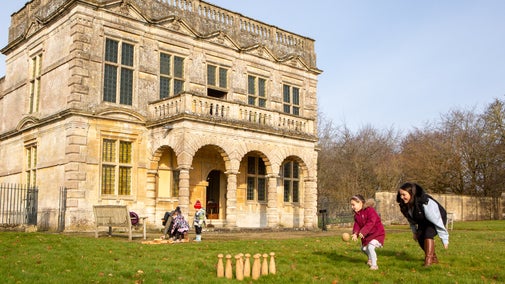Lodge Park and Sherborne Park Estate
Gloucestershire & the CotswoldsEngland's only surviving 17th-century grandstand, within a tranquil Cotswold estate full of diverse wildlife
Sherborne Park Estate, Aldsworth, near Cheltenham, Gloucestershire, GL54 3DT

Planning your visit
Visiting Lodge Park in 2025
A place of entertainment and fun, Lodge Park will open for selected weekends through 2025.

Visiting Lodge Park and Sherborne Park Estate with your dog
This article discusses dogs at Sherborne and Lodge Park, with some information about what you need to be aware of, where you can go with your dog and what facilities are available.

Volunteer at Lodge Park
There are number of opportunities in 2025 to volunteer for the National Trust. In this article, find out more about our open positions for Lodge Park and the Sherborne Estate.

Family-friendly things to do at Lodge Park and Sherborne Estate
Discover how to make the most of your visit to Lodge Park and Sherborne Estate - what activities you can join in with and what facilities are available for families.








